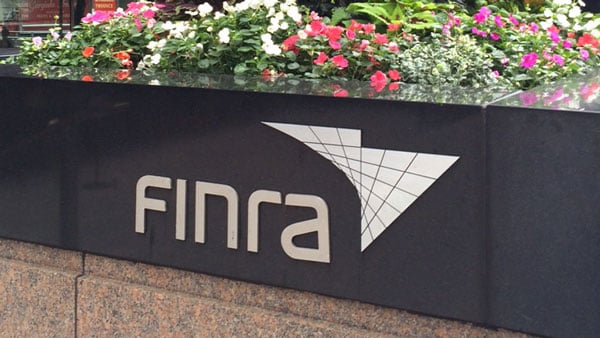The Financial Industry Regulatory Authority collected $61 million in fines last year, a 6% dip from $65 million collected in 2017. The broker-dealer self-regulator allocated $9.7 million of the 2018 fine money to overhaul its registration and disclosure programs, including the Central Registration Depository system, and to launch its new Securities Industry Essentials exam.
This is the second year that FINRA has shared how its fine monies are spent.
“It’s good to see that FINRA is continuing with the transparency that it established last year,” Brian Rubin, partner at Eversheds Sutherland, told ThinkAdvisor on Thursday. “I’m sure firms will be heartened to see that FINRA is using fines, in part, to help firms comply with rules and to educate investors. Firms may, however, question FINRA using fines to pay for enforcement tools that may help FINRA bring more cases and assess higher fines.”
(Related: FINRA Launches New Fintech Office)
The FINRA Board determined that there were $81.1 million in fines-eligible expenditures in 2018.
“Because the total of fines-eligible expenditures exceeded the amount of fines issued in 2018, the balance of $20.1 million was funded from FINRA’s reserves,” the regulator said.
FINRA said that it uses fine money on capital initiatives or nonrecurring strategic expenditures that promote more effective and efficient regulatory oversight by FINRA — including leveraging technology and data in a secure manner or to improve BDs’ compliance as well as on education and training.
Other project spending in 2018 included:
- $16 million to migrate various technology applications from existing FINRA-managed data centers to cloud-based platforms;
- $11.8 million to enhance the sophisticated computer programs or “patterns” used to detect a wide variety of compliance issues and suspicious conduct across markets;
- $5.8 million to implement and ongoing support for the reporting of trades in Treasury securities to FINRA’s Trade Reporting and Compliance Engine, or TRACE, as well as FINRA’s surveillance of the Treasuries market;
- $2.0 million to comply with the Consolidated Audit Trail, or CAT, the SEC-mandated system to track orders throughout their life cycle and identify the broker-dealers handling them;
- $1.8 million on trade transparency systems;
- $8.5 million to enhance the technology that supports the exam and risk monitoring platform;
- $2.0 million to update tools used to manage work efficiently under the new, unified enforcement structure;
- $1.5 million to enhance FINRA’s data analytics program on business models and industry relationships, trading activity and disciplinary history; and
- $3.5 million was invested in various investor education programs, including enhancing BrokerCheck.
— Related on ThinkAdvisor:
- FINRA Launches New Fintech Office
- FINRA Reminds BDs of Business Continuity, Disaster Recovery Duties
NOT FOR REPRINT
© 2024 ALM Global, LLC, All Rights Reserved. Request academic re-use from www.copyright.com. All other uses, submit a request to [email protected]. For more information visit Asset & Logo Licensing.








